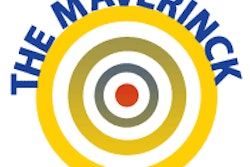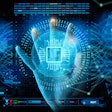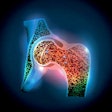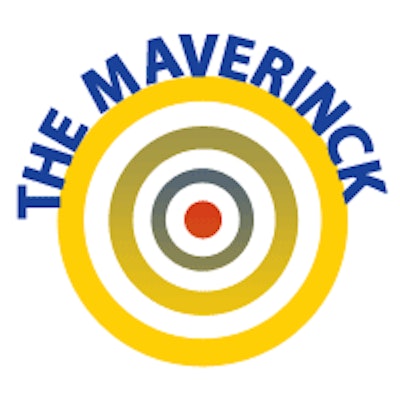
Many opinion makers in medical imaging have accepted as gospel that the future of imaging medicine is digital and that one has to collect all kinds of data available to process and reprocess. They try to sell the concept in numerous lectures and papers, such as "images are more than pictures, they are data" -- an amazing though late realization and the astonishing title of a 15-page publication in the February edition of Radiology.1 It's written in the flowery journalistic style of a feature page article with a long list of nonfitting references.
All over the media we find "data mines," "data lakes," or "data clouds." None of them assume a definite form or contents; they all are slightly mystic and mysterious. Let's try to demystify this foggy "datarrhea." Is there any applicable clinical connection, any applicable diagnostic relation to radiology?
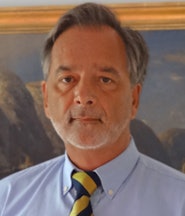 Dr. Peter Rinck, PhD, is a professor of diagnostic imaging and the president of the Council of the Round Table Foundation (TRTF) and European Magnetic Resonance Forum (EMRF).
Dr. Peter Rinck, PhD, is a professor of diagnostic imaging and the president of the Council of the Round Table Foundation (TRTF) and European Magnetic Resonance Forum (EMRF).Three major points struck me:
- Hardly any reference is made to publications and results that were published before 2000.
- Hardly any medical doctor with clinical background is involved.
- There is strong commercial pressure and support of data exploitation of diagnostic imaging data.
The daily clinical reality in radiology is relevant here. A large majority of cases seen are easy and straightforward: They are either negative or positive, and, if positive, the pathology is clearly visible and easily described. One always should get the patient's history and results of clinical examinations; in a minority of cases laboratory, histological and perhaps even genetic tests will be necessary -- and the cooperation and exchange between a number of medical disciplines to establish a hopefully solid diagnosis and treatment.
Medical care -- diagnostics as well as therapy -- does not consist of data algorithms, and medicine is not a science. You cannot build up a virtual reality based on supposedly "precise" data, which most likely contain contaminated data, data errors, and simply wrong data.
I have already stressed earlier that some 20 years ago we had a wave of research into "diagnostic data," at that time also described as "electronic contrast agents" or "fingerprints." After many years of work and research only few medically relevant applications emerged.2 Some features were incorporated into digital image processing. However, most the manipulated data did not lead to reliable additional information about already observed pathologies. Why doesn't anybody involved in the new data hype learn the basics and read the papers published in the 30 years before the turn of the millennium? Most answers can be found there -- or in good textbooks.
The data nerds not only live in an ivory tower with a very limited knowledge and view of medical reality, they are also quite confused about their own new discipline. Some want processed personal image data in comparison with, e.g., genetic data, some want bulk personal data collection, including metadata such as patient's name and birth date (most likely to sell them to insurance companies or other institutions interested in them), and some are simply vague and fuzzy about what the outcome of their data milking should and will be. Data offer supposedly simple solutions to complex problems, but one has to find fitting problems.3
Turning this into a new "science" called "radiomics" or "radiogenomics" overshoots the mark. If you give a crippled horse a new name, it still remains a crippled horse and won't run faster. On the other hand, interdisciplinary collaboration of specialists has been going on for a long time -- but you need specialists in their field, not data collectors and administrators.
It seems a lot of people either do not know what they are doing and parrot what others are preaching or believe that they have found something they can make money out of. We do not know what all these data mean -- but we've got it, lakes of it. As I wrote earlier: When you reinvent the wheel, always consider the flat tire problem.
By sheer coincidence, I had an exchange about this topic with Dr. Mikhail Liubchak, a radiologist in Odessa. He told me the following:
The existing overwhelming obsession for "quantification" of every aspect of diagnostic imaging sometimes takes bizarre forms. Biomedical imaging researchers often have a physics or IT background and vague understanding of the true concept of diagnostic radiology. This research is being blindly but fully supported by financially driven decision-makers, who from time to time try create a new paradigms of medical imaging based on computer-aided diagnosis (that's what I feel most of the quantification is meant for), with a diminishing role for diagnostic radiologists.
And somehow it seems likely that in this financially driven system of coordinates, where quantification means everything, no one would pay too much attention to reproducibility of MR imaging techniques and associated problems. Needless to say that results of such "magnificent innovations" could turn out to be surprising.
Nobody seems to make a real effort to find out what exactly could be done with the data. Collecting, processing, and manipulating personal data will lead to Kafkaesque and secretive administrative institutions. However, in the end, I don't say that we don't need the Great Data Lake and data mining. It is fitting to say that it provides pleasing and lucrative employment to many thousands, gives them a kind of importance and responsibility, and, thus, adds to the stability of our societies.
This seems also to be the opinion of Jeffrey Immelt, chairman and CEO of General Electric, who gave the New Horizons Lecture at the RSNA annual meeting in November 2015: "The biggest technical theme in the world today is the merger between machines and data. If you think you're an industrial company, you're really a data company." He advocated "precision medicine," radiogenomics, and the merging of the disciplines of radiology and pathology.
Industry, in this case the health industry, depends on the creation of pseudo novelties to survive because, at present, there seem to be no real innovations or inventions. We will see if more or less random data mining will be more akin to a temporary gold rush.
What will remain at the end? Will data turn out a fertile soil -- or a fruitless endeavor? Are data really the last truth?
Perhaps it might be useful to create less data.
Dr. Peter Rinck, PhD, is a professor of diagnostic imaging and the president of the Council of the Round Table Foundation (TRTF) and European Magnetic Resonance Forum (EMRF).
References
- Gillies RJ, Kinahan PE, Hricak H. Radiomics: Images are more than pictures, they are data. Radiology. 2016;278(2):563-577.
- Rinck PA. MR fingerprinting returns to radiology -- and hopefully disappears again. Rinckside. 2015;26(5):13-14. http://www.rinckside.org/Rinckside%20Columns/2015%2006%20MR-Fingerprinting.htm. Accessed 6 June 2016.
- Rinck PA. Medical philosophy: Cartesian versus confusion. Rinckside. 2004; 15(3):7-9. http://www.rinckside.org/Rinckside%20Columns/2004%2010%20Medical%20philosophy%20-%20Cartesian%20versus%20confusion.htm. Accessed 6 June 2016.
The comments and observations expressed herein do not necessarily reflect the opinions of AuntMinnieEurope.com, nor should they be construed as an endorsement or admonishment of any particular vendor, analyst, industry consultant, or consulting group.





